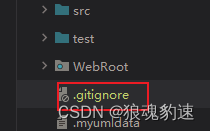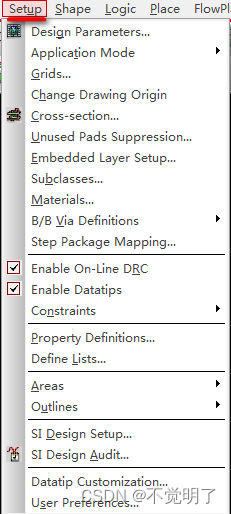springboot项目打包成docker镜像-贾玉珍-2023年2月8日
方法一:将项目jar包手动推送到docker服务器上
1.用maven对项目进行打包,打包成功后会有一个target目录,目录下有打好的项目jar包
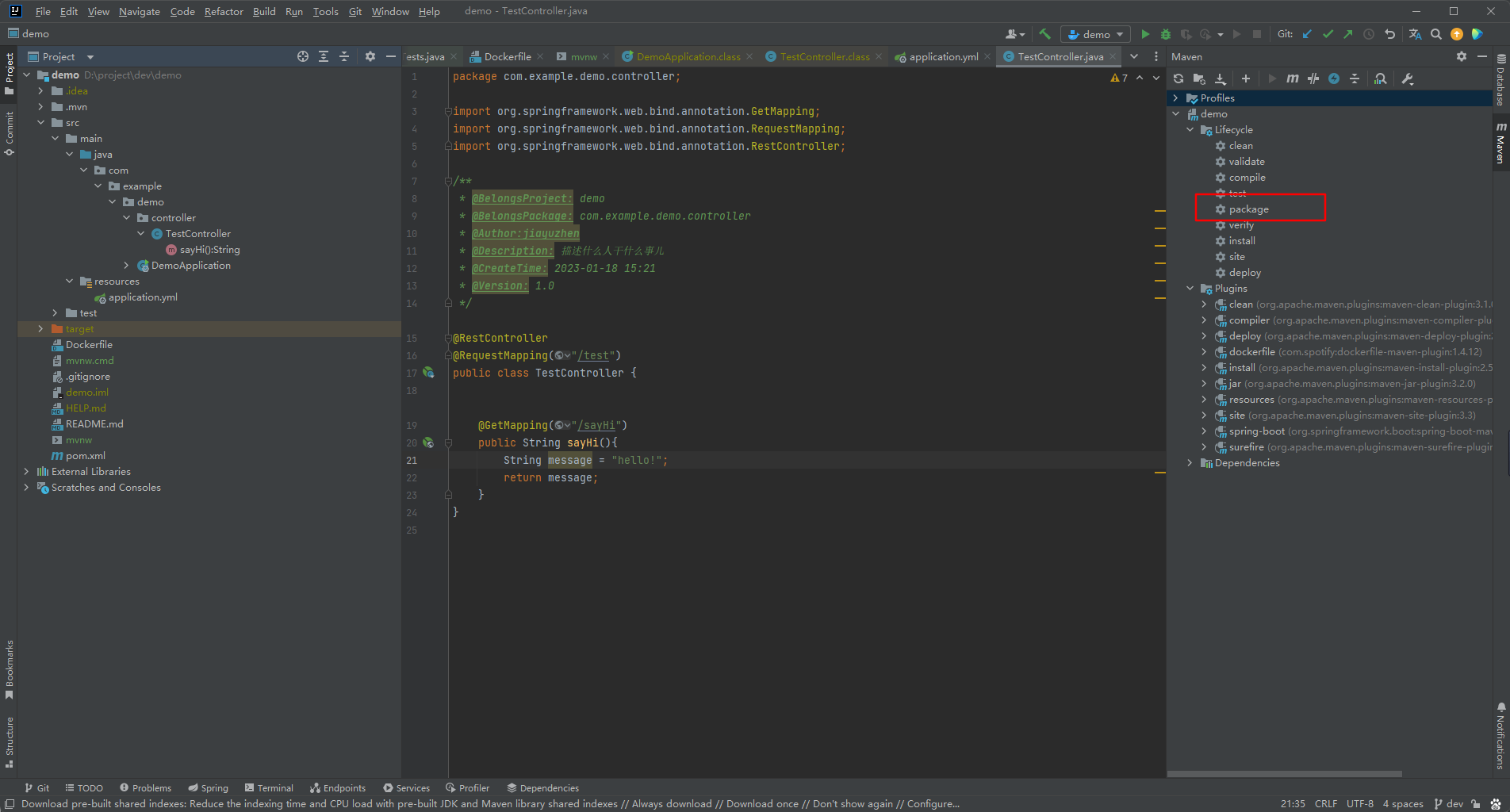

2.将jar包上传到服务器上,我用的是finalshell工具,大家可以自己根据自己使用的工具将文件传送到服务器上

3.在跟jar包同级目录下写Dockerfile文件

dockerfile文件具体内容
FROM openjdk:11 #基于哪些镜像进行构建
MAINTAINER gpj #作者名称
#
# 将jar包添加到容器中,并命名为 springboot_docker.jar
ADD demo-0.0.1-SNAPSHOT.jar /demo.jar
# 运行jar包
RUN bash -c 'touch demo.jar'
ENTRYPOINT ["java", "-jar", "demo.jar"]
# 设置时区
RUN /bin/cp /usr/share/zoneinfo/Asia/Shanghai /etc/localtime && echo 'Asia/Shanghai' >/etc/timezone
# SpringBoot项目配置的端口号为9999,需要将9999暴露出去
EXPOSE 99994.执行docker build命令
docker build -f Dockerfile -t demo:1.0 .
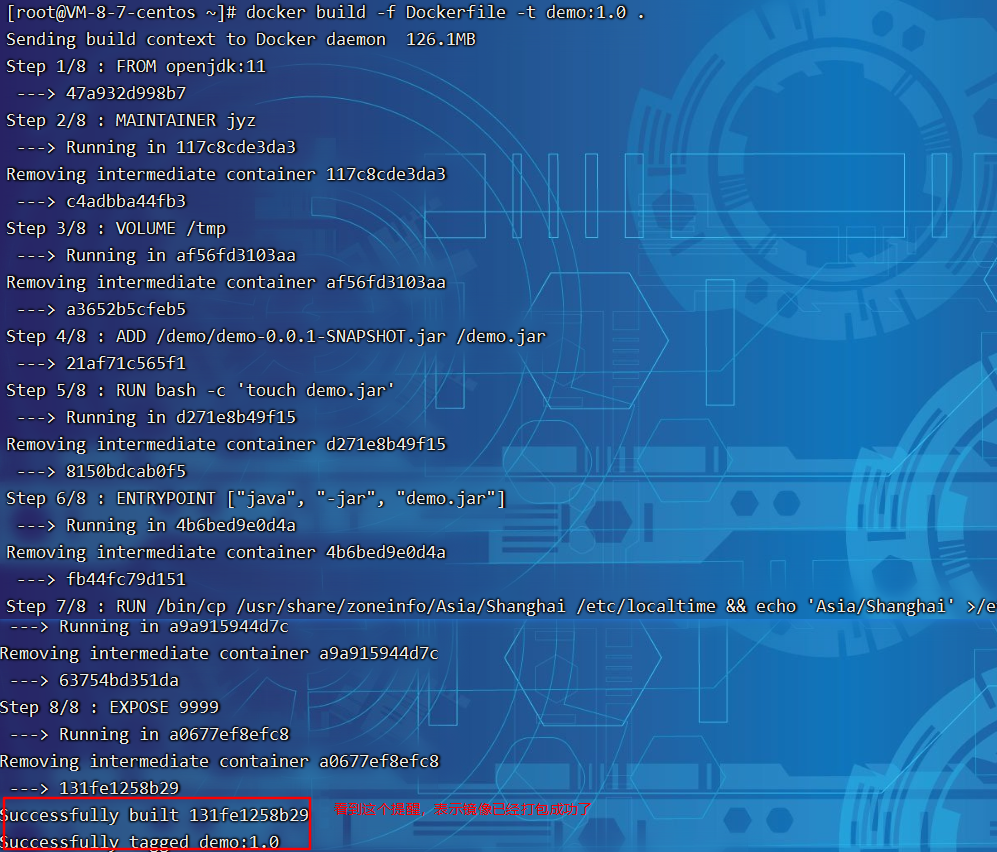
5.查看镜像
docker images

可以看到刚刚打包的镜像
6.运行容器
docker run -d --name dmeo -p 9999:9999 demo:1.0

查看容器是否在运行
docker ps

服务器开放9999端口
firewall-cmd --zone=public --add-port=9999/tcp --permanent
systemctl restart firewalld
调用后端方法

方法二:在idea中安装docker插件,通过插件部署
1.安装docker插件
进入项目,点击File->Settings->Plugins,docker插件是默认安装上的,可以先去Installed中查看是否已经安装
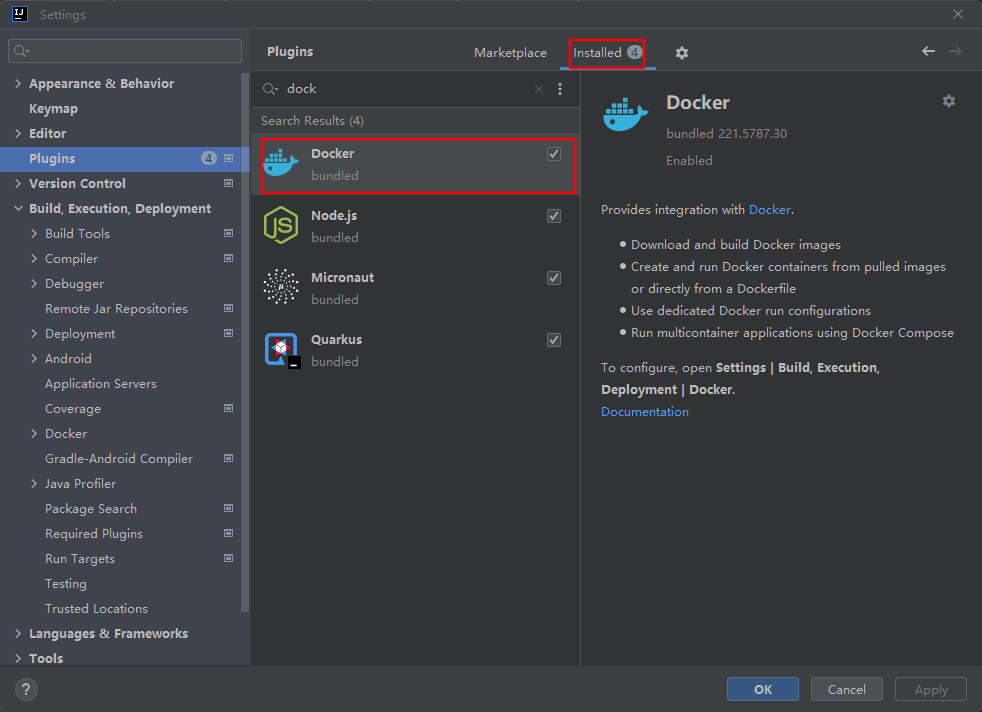
如果未安装可以点击Marketplace,在搜索框中搜索docker,点击Installed进行安装

2.打开docker远程访问
修改docker.service文件
Docker 安装成功之后,首先需要修改 Docker 配置来开启允许远程访问 Docker 的功能。
文件位置:/lib/systemd/system/docker.service
修改内容: 加入如下内容:
DOCKER_OPTS="-H tcp://0.0.0.0:2375 -H unix:///var/run/docker.sock"

服务器开放2375端口
firewall-cmd --zone=public --add-port=2375/tcp --permanent
systemctl restart firewalld
重启docker
systemctl daemon-reload
systemctl restart docker
3.在idea的docker插件中配置docker远程访问的地址
在idea项目中点击File->settings->Build->Docker

4.在项目根目录和pom文件同级的地方写Dockerfile文件
dockerfile文件的具体内容
FROM openjdk:11
MAINTAINER jyz
#
# 将jar包添加到容器中,并命名为 springboot_docker.jar
ADD demo-0.0.1-SNAPSHOT.jar /demo.jar
# 运行jar包
RUN bash -c 'touch demo.jar'
ENTRYPOINT ["java", "-jar", "demo.jar"]
# 设置时区
RUN /bin/cp /usr/share/zoneinfo/Asia/Shanghai /etc/localtime && echo 'Asia/Shanghai' >/etc/timezone
# SpringBoot项目配置的端口号为9999,需要将9999暴露出去
EXPOSE 9999
5.在启动配置那里编辑docker配置


之后点击执行
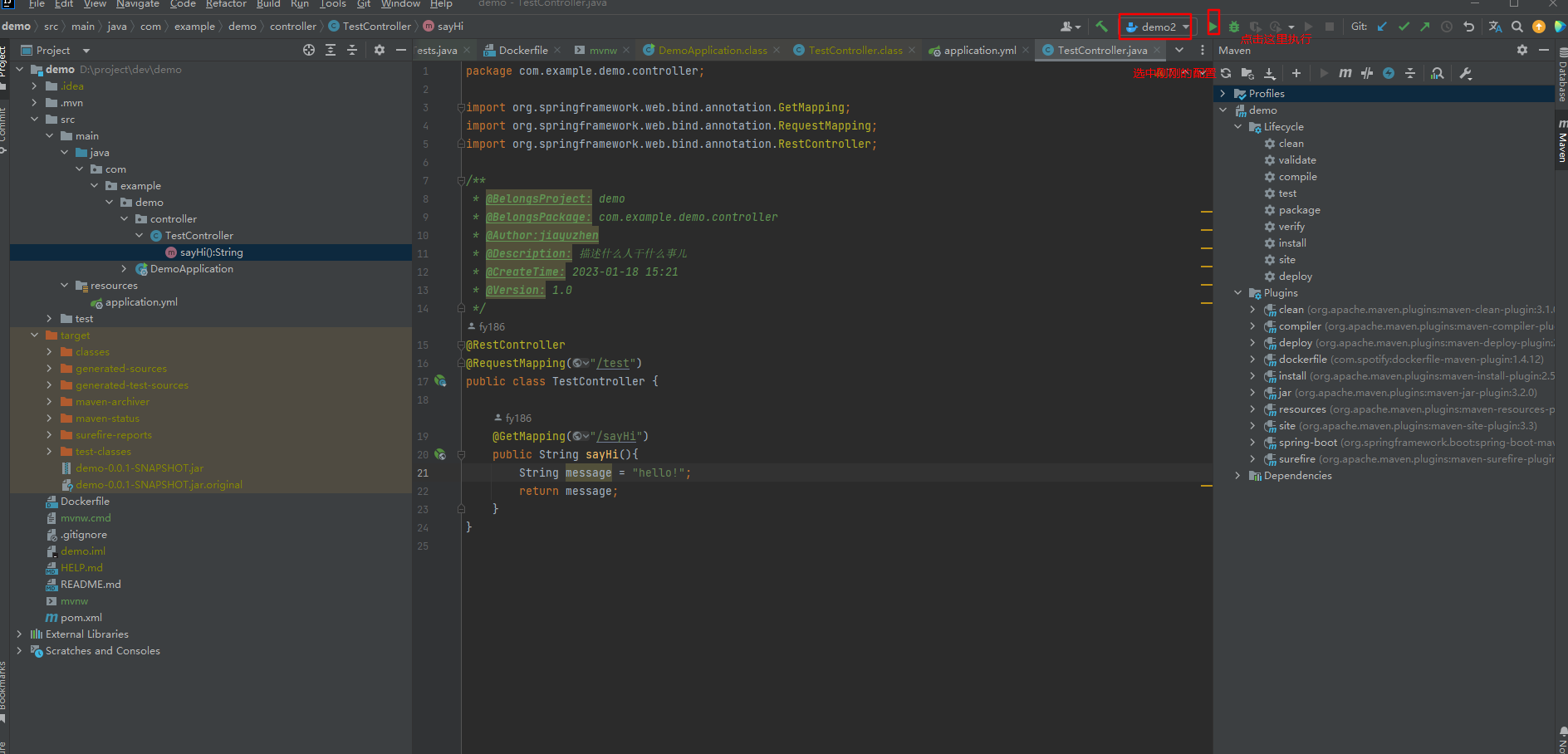
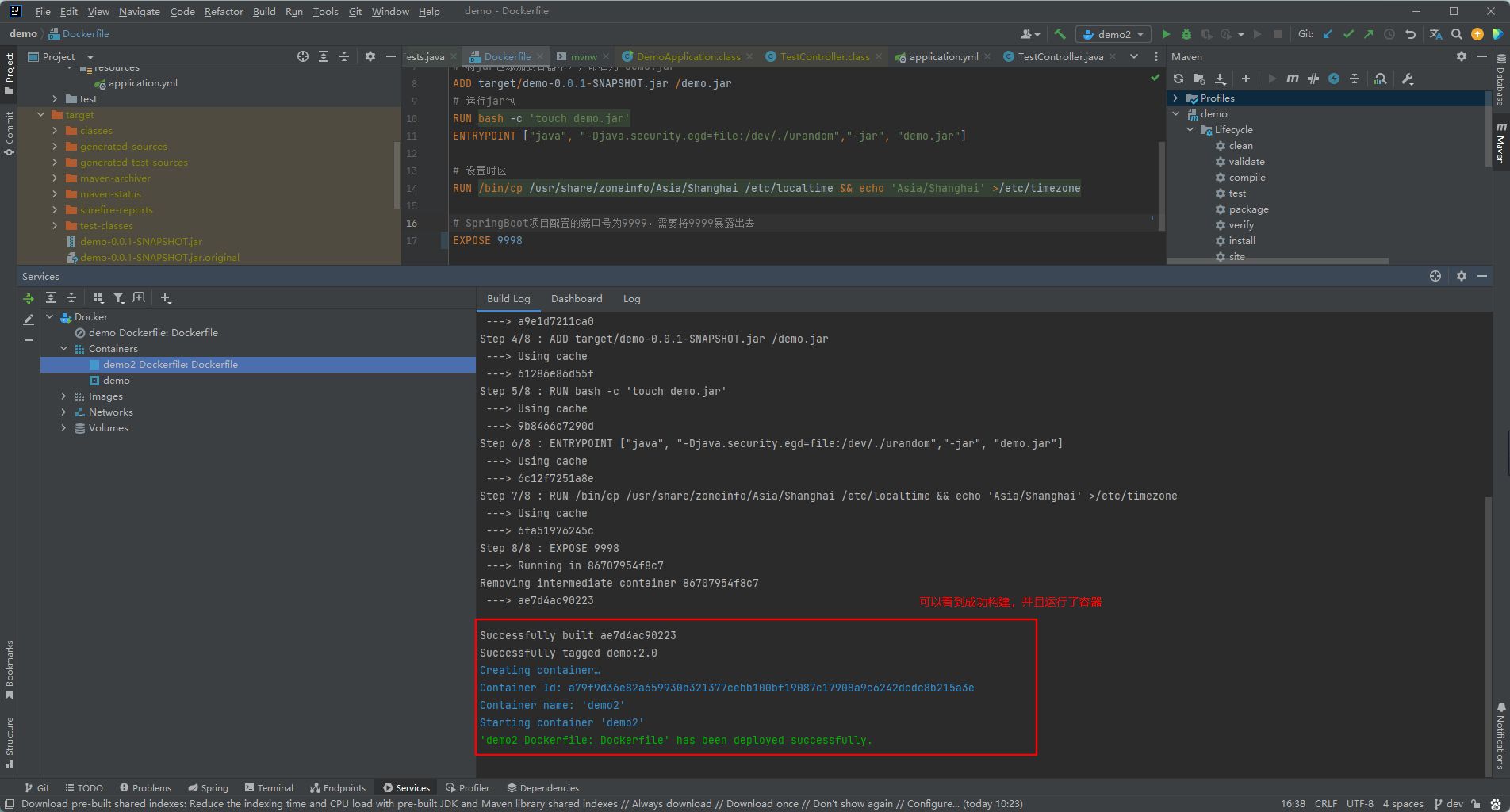
可以根据方法一中的最后两步进行验证
方法三:用maven插件进行构建
开启docker远程访问,详细步骤见方法二
将dockerfile文件放到resource文件夹下
1.在pom文件中引入docker插件
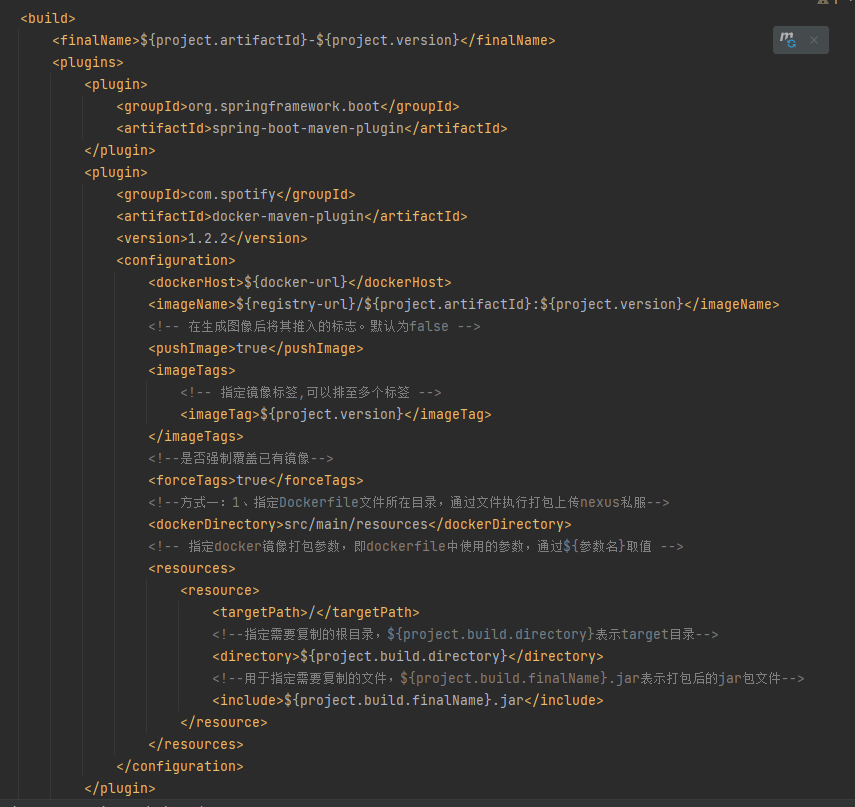
pom文件详细内容
<?xml version="1.0" encoding="UTF-8"?>
<project xmlns="http://maven.apache.org/POM/4.0.0" xmlns:xsi="http://www.w3.org/2001/XMLSchema-instance"
xsi:schemaLocation="http://maven.apache.org/POM/4.0.0 https://maven.apache.org/xsd/maven-4.0.0.xsd">
<modelVersion>4.0.0</modelVersion>
<parent>
<groupId>org.springframework.boot</groupId>
<artifactId>spring-boot-starter-parent</artifactId>
<version>2.3.12.RELEASE</version>
<relativePath/> <!-- lookup parent from repository -->
</parent>
<groupId>com.example</groupId>
<artifactId>demo</artifactId>
<version>0.0.1-SNAPSHOT</version>
<name>demo</name>
<description>demo</description>
<properties>
<java.version>11</java.version>
<docker-ip>服务器IP</docker-ip>
<docker-url>http://${docker-ip}:2375</docker-url>
</properties>
<dependencies>
<dependency>
<groupId>org.springframework.boot</groupId>
<artifactId>spring-boot-starter</artifactId>
</dependency>
<dependency>
<groupId>org.springframework.boot</groupId>
<artifactId>spring-boot-starter-web</artifactId>
</dependency>
<dependency>
<groupId>org.springframework.boot</groupId>
<artifactId>spring-boot-starter-test</artifactId>
<scope>test</scope>
</dependency>
</dependencies>
<build>
<finalName>${project.artifactId}-${project.version}</finalName>
<plugins>
<plugin>
<groupId>org.springframework.boot</groupId>
<artifactId>spring-boot-maven-plugin</artifactId>
</plugin>
<plugin>
<groupId>com.spotify</groupId>
<artifactId>docker-maven-plugin</artifactId>
<version>1.2.2</version>
<configuration>
<dockerHost>${docker-url}</dockerHost>
<imageName>${project.artifactId}:${project.version}</imageName>
<!-- 在生成图像后将其推入的标志。默认为false -->
<pushImage>true</pushImage>
<imageTags>
<!-- 指定镜像标签,可以排至多个标签 -->
<imageTag>${project.version}</imageTag>
</imageTags>
<!--是否强制覆盖已有镜像-->
<forceTags>true</forceTags>
<!--方式一:1、指定Dockerfile文件所在目录,通过文件执行打包上传nexus私服-->
<dockerDirectory>src/main/resources</dockerDirectory>
<!-- 指定docker镜像打包参数,即dockerfile中使用的参数,通过${参数名}取值 -->
<resources>
<resource>
<targetPath>/</targetPath>
<!--指定需要复制的根目录,${project.build.directory}表示target目录-->
<directory>${project.build.directory}</directory>
<!--用于指定需要复制的文件,${project.build.finalName}.jar表示打包后的jar包文件-->
<include>${project.build.finalName}.jar</include>
</resource>
</resources>
</configuration>
</plugin>
</plugins>
</build>
</project>2.运行mvn build命令
mvn docker:build
成功打包成镜像
可以根据方法一中的最后两步进行验证
基于第三步的配置进行镜像区分环境
以下文件需要配置到pom文件中,这里的配置每一个profile标签都是独立的,只有在打包的时候才会用到,也就是执行 mvn命令时通过 -P这个指令指定profile标签的id那么打包所用的一些参数配置会以你制定的profile为准。
<profiles>
<profile>
<!--不同环境Profile的唯一id-->
<id>dev</id>
<properties>
<!--profiles.active是自定义的字段(名字随便起),自定义字段可以有多个-->
<profiles.active>dev</profiles.active>
</properties>
</profile>
<profile>
<id>prod</id>
<!--properties标签下定义的标签是个性化的,根据业务项目需要定制不同标签,-->
<properties>
<profiles.active>prod</profiles.active>
<docker-url>服务器IP:2375</docker-url>
</properties>
</profile>
<profile>
<id>test</id>
<properties>
<profiles.active>test</profiles.active>
<docker-url>服务器IP:2375</docker-url>
</properties>
<activation>
<activeByDefault>true</activeByDefault>
</activation>
</profile>
</profiles>此时把之前在pom中<properties>定义的docker-url删除,在执行mvn打包镜像命令时添加 -P
<!--这里如果镜像统一都是由一个docker服务器打包的话,在镜像的名字中添加上test或者prod,再或者其他标识不同环境的信息即可,我这里是使用的profiles.active作区分,对应的是我上面声明的环境信息-->
<imageName>${project.artifactId}-${profiles.active}:${project.version}</imageName>mvn -Ptest docker:build
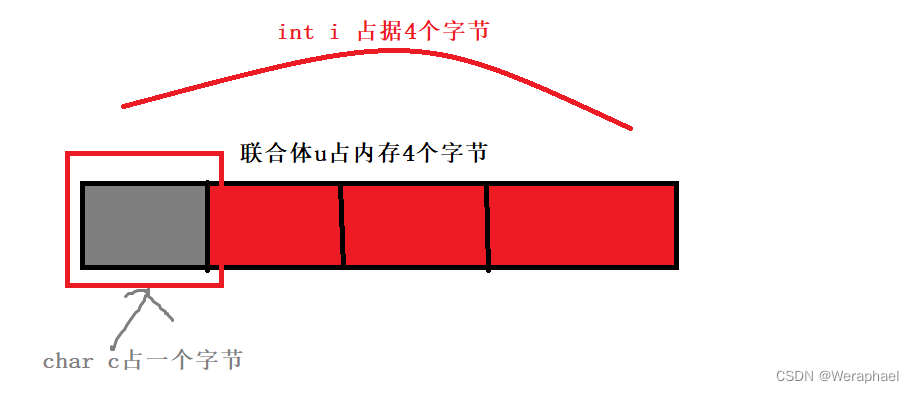

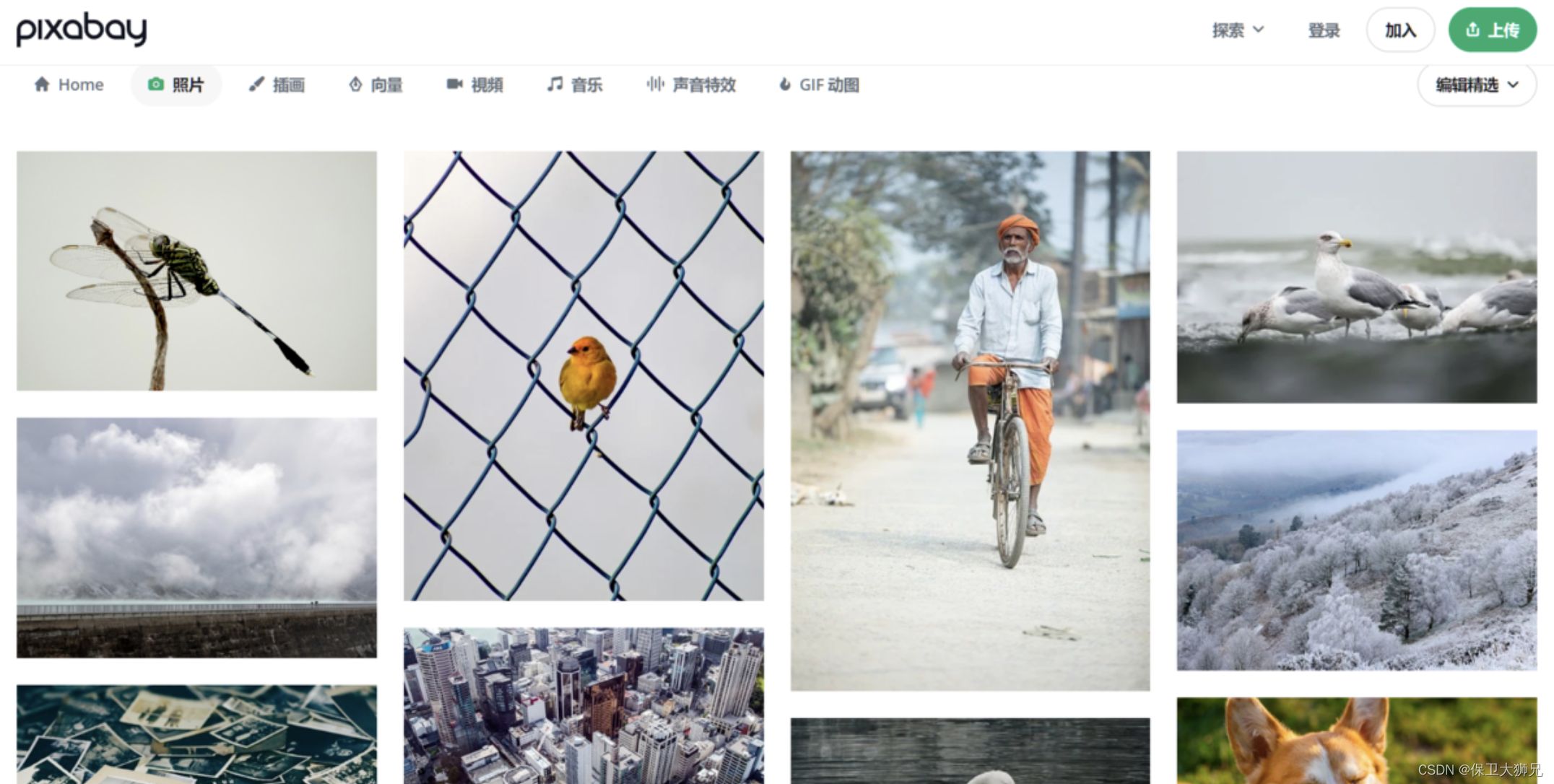

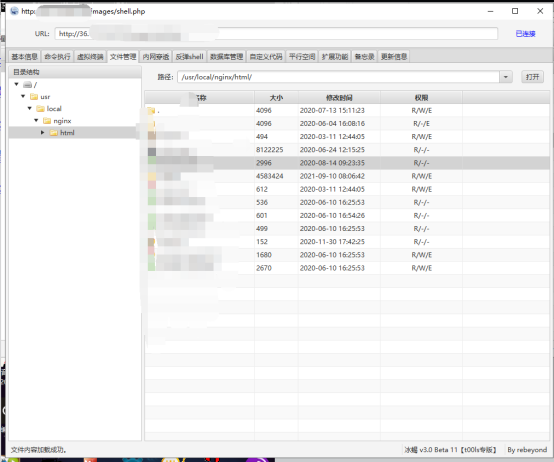

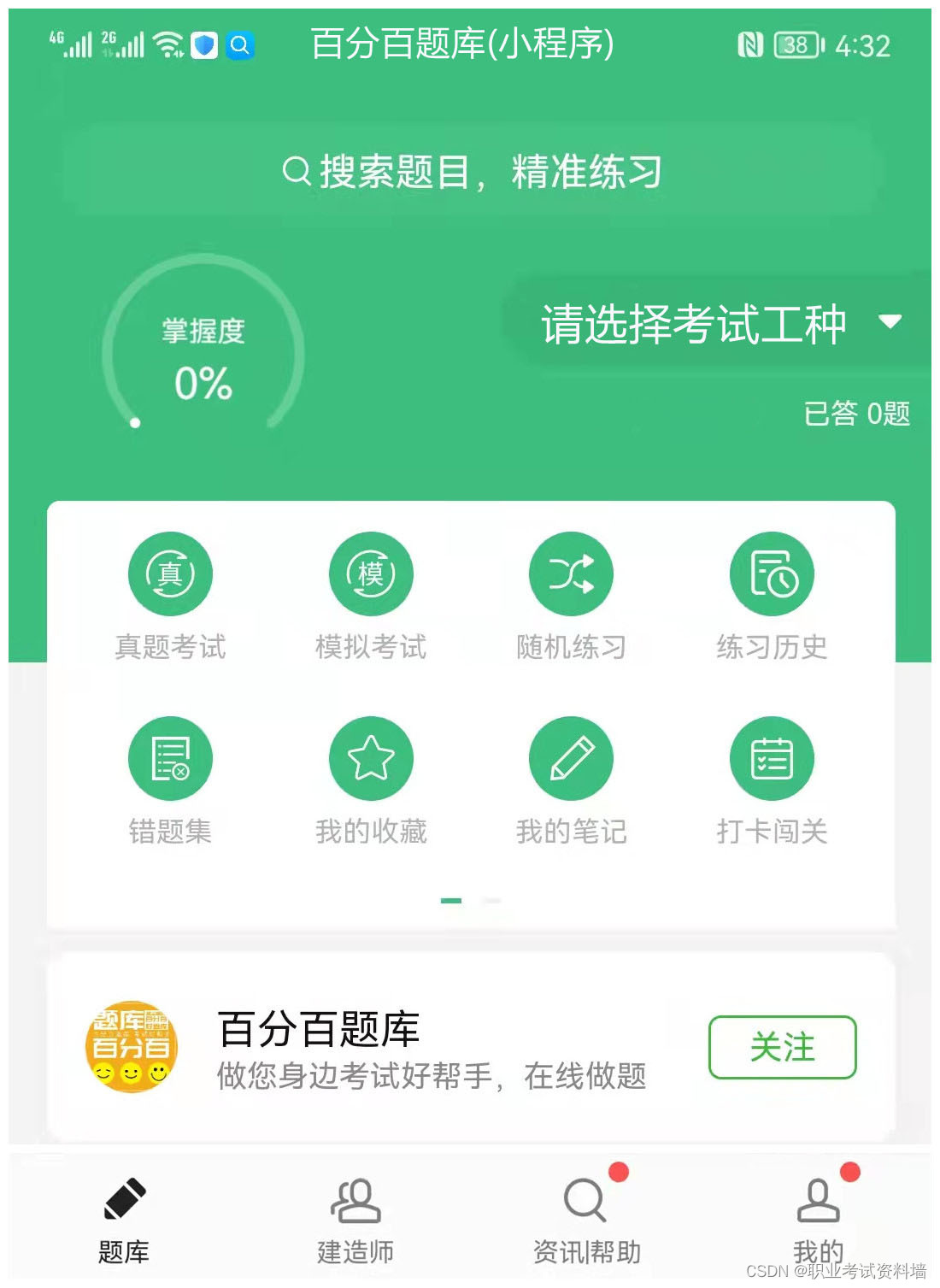
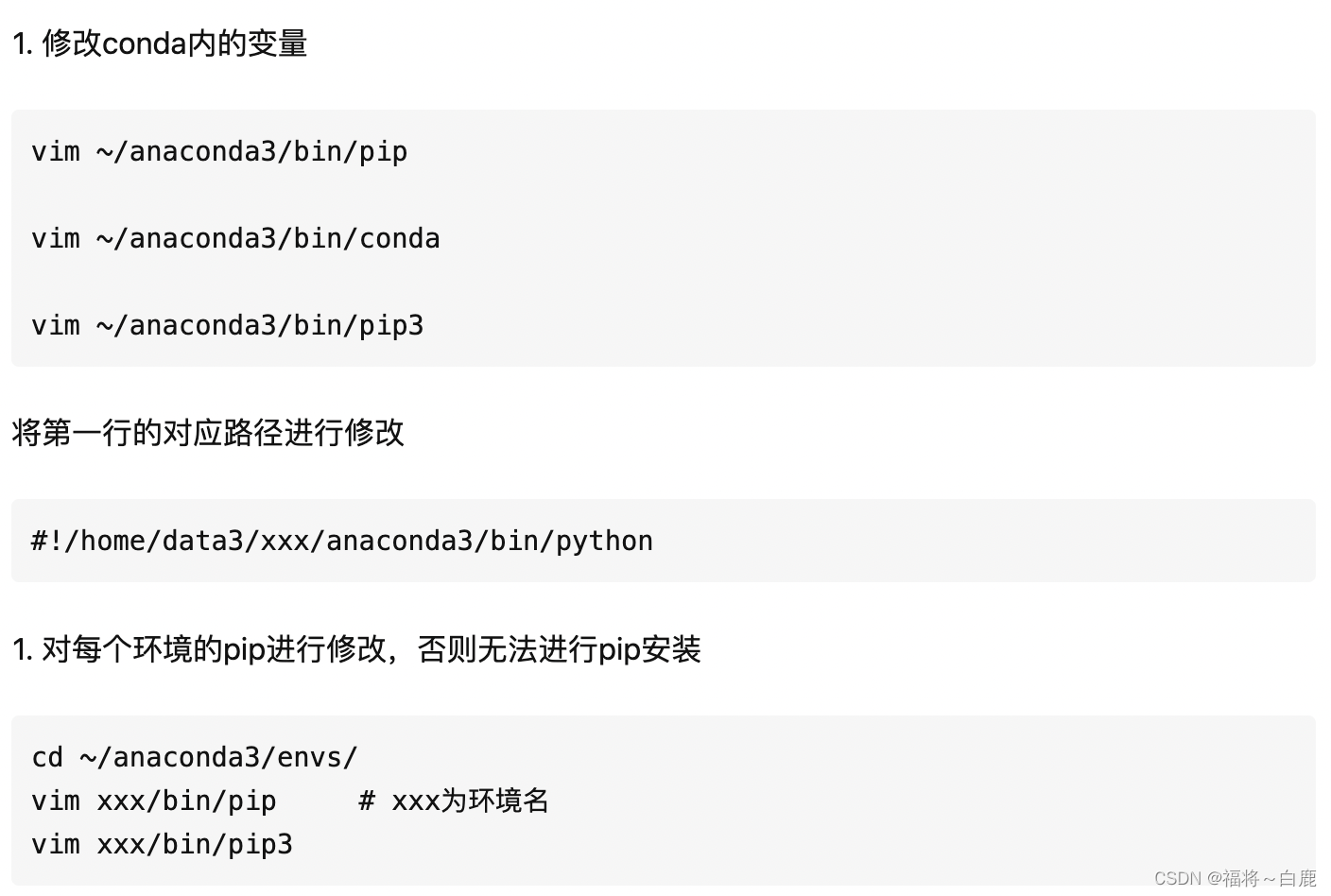
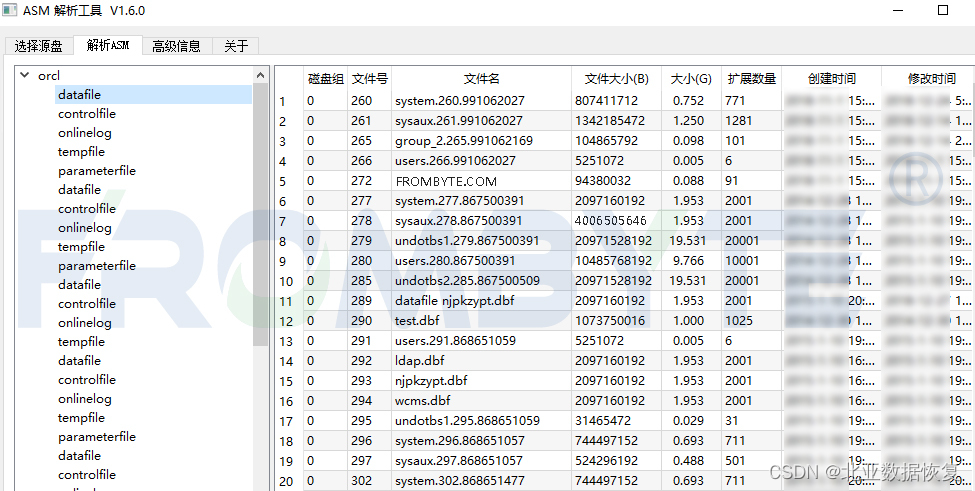
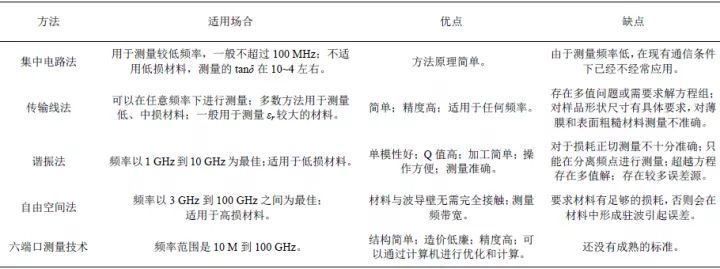
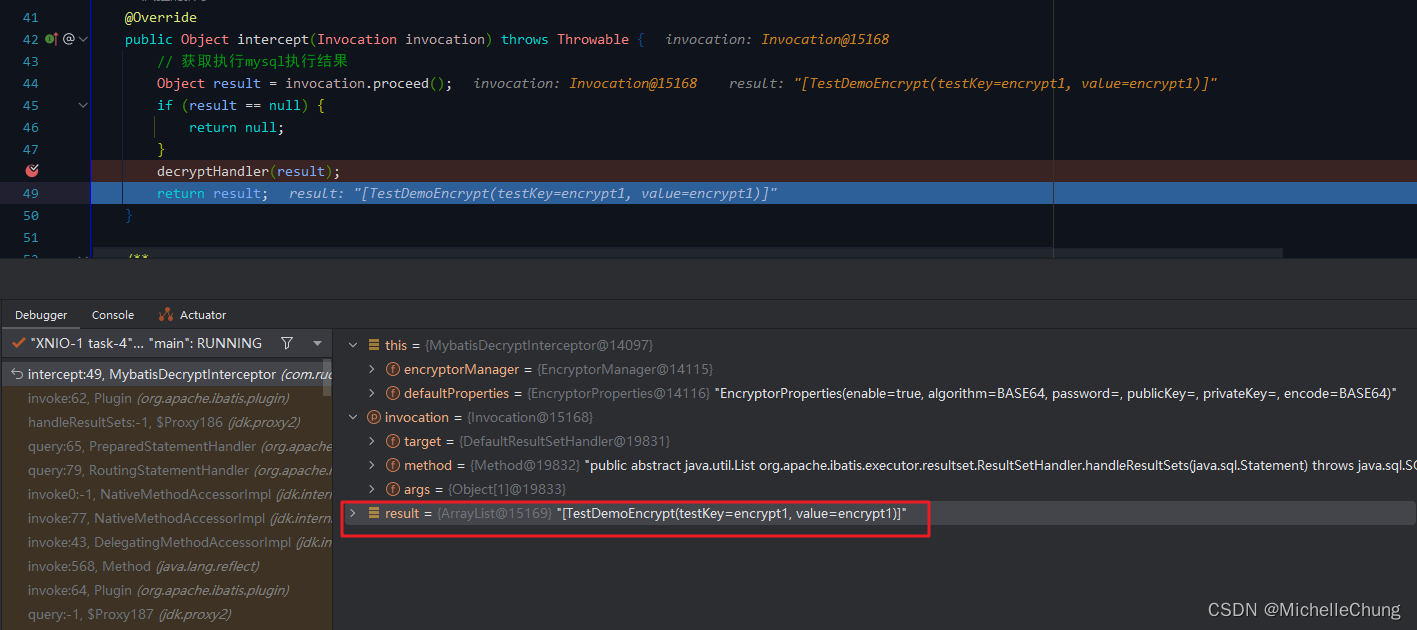
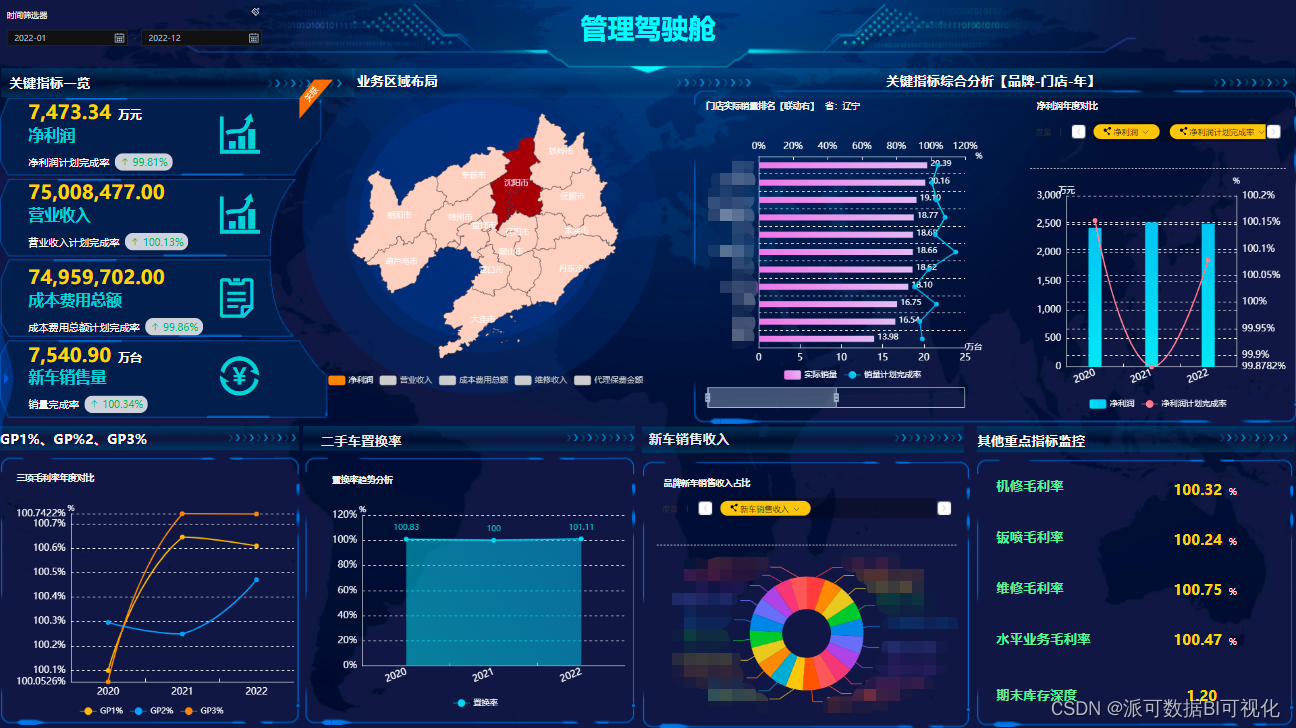
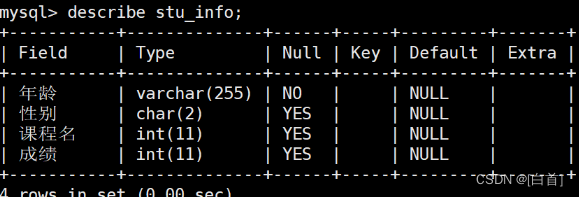
![[数据库迁移]-MySQL常见问题](https://img-blog.csdnimg.cn/627b7c893ad3438fabbfc4a2511a4583.png#pic_center)
